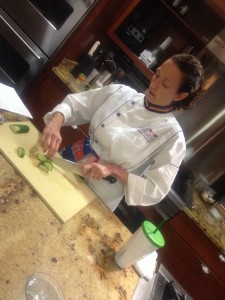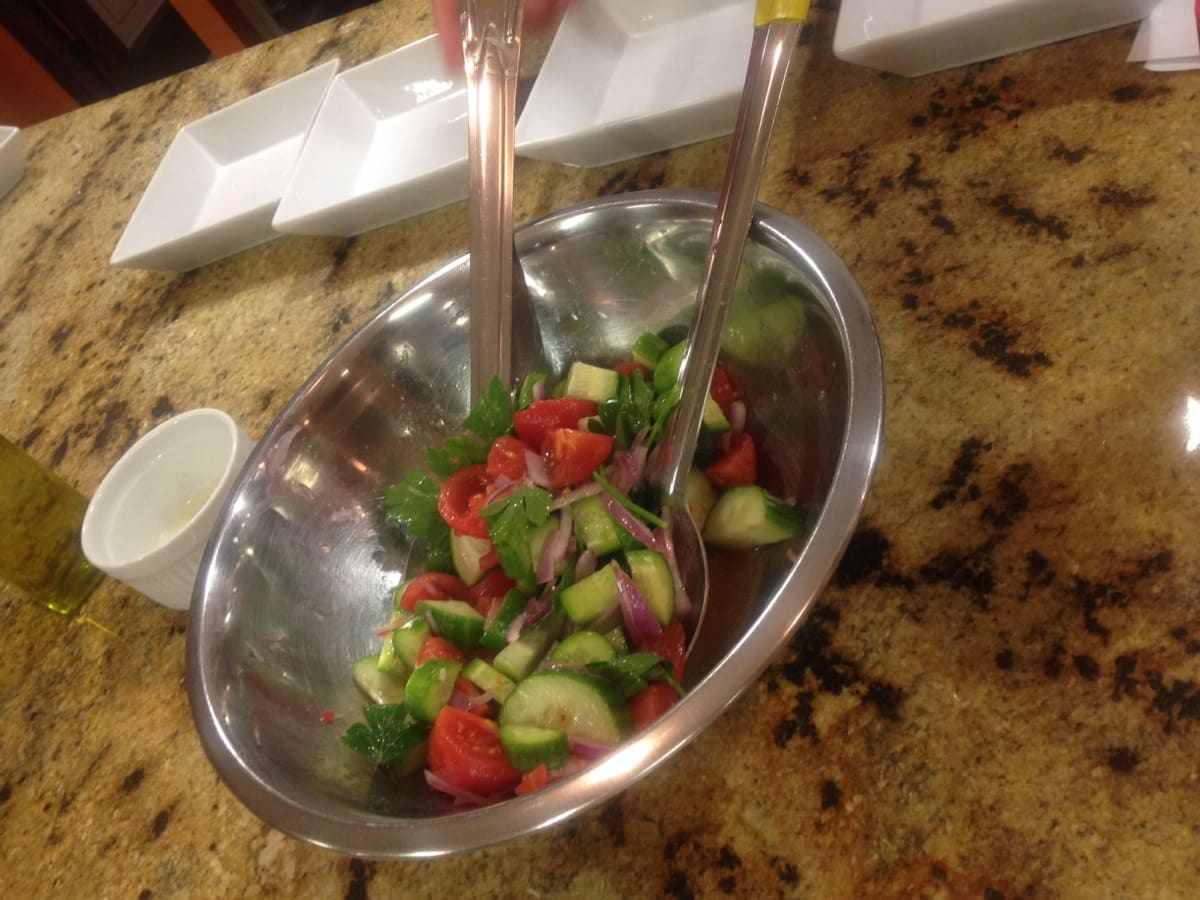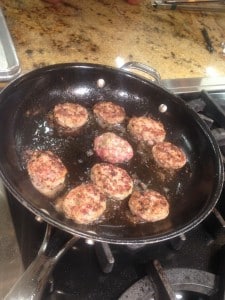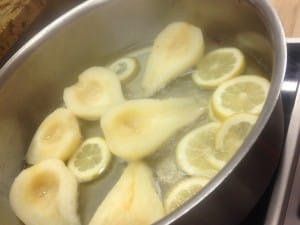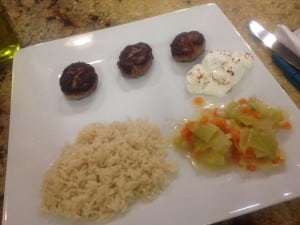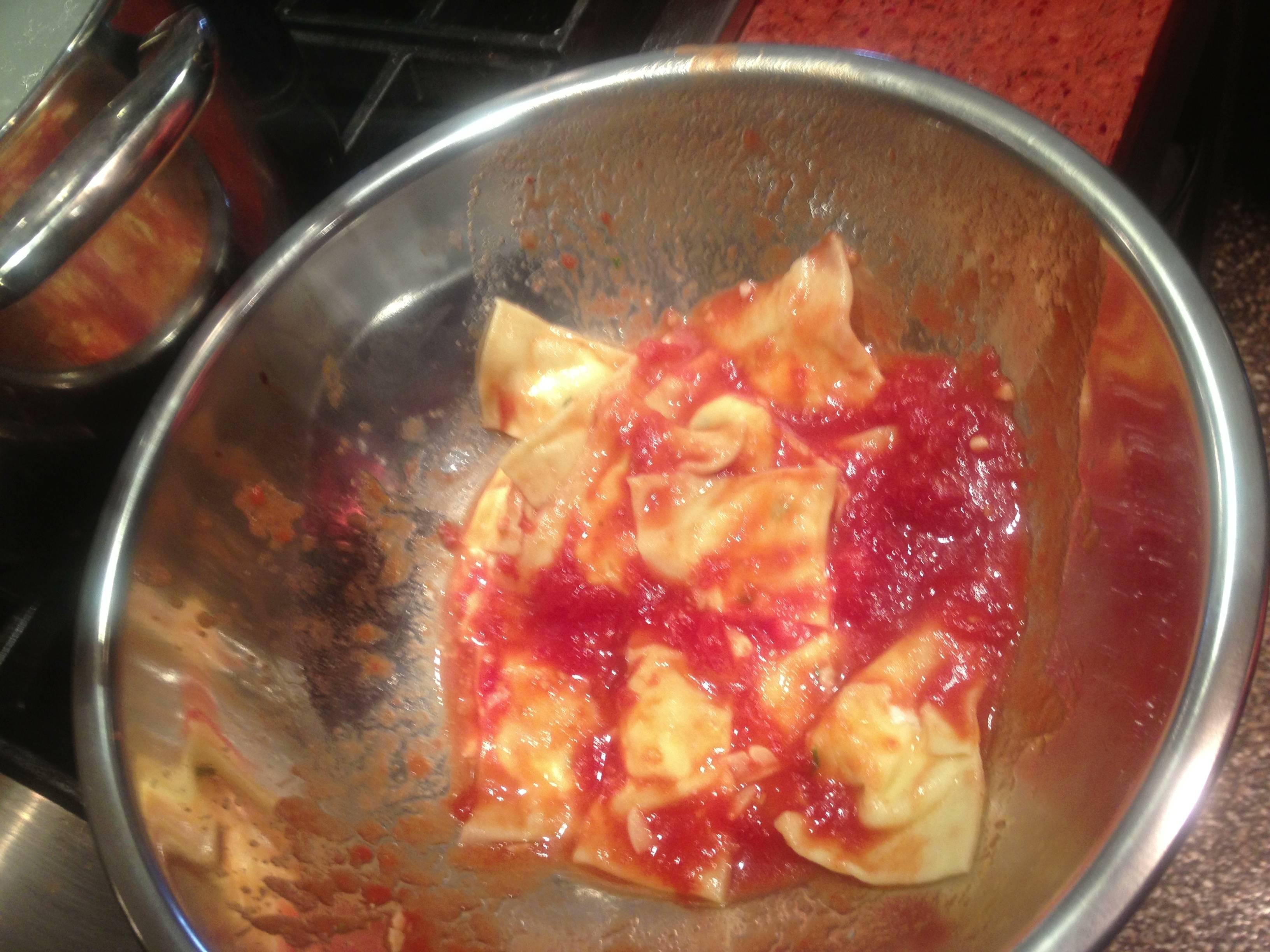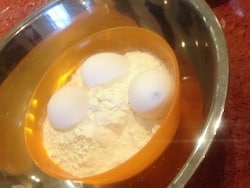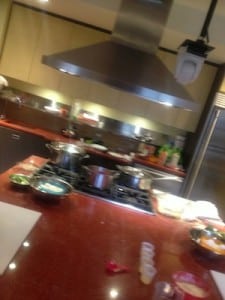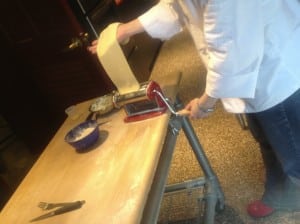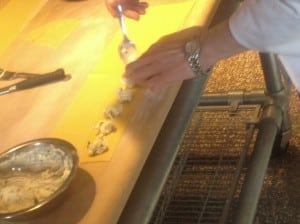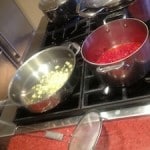Posts Tagged ‘Cookology’
It’s All Turkish to Me – My First Cooking Class at Culinaria, Vienna, Virginia
I’ve been wanting to try Culinaria Cooking School in Vienna, Virginia for awhile and decided to try their Intro to Turkish Cuisine cooking class on Wednesday, October 9th, 2013.
Culinaria was founded by long time local cooking instructors Stephen Sands and Pete Snaith who both learned their trade teaching at Bethesda, Marylands’ L’Academie de Cuisine (Pete also had some time at the Culinary Institute of Florence). Our instructor for this event was Stefanie Sacripante who graduated from NYC’s Institute of Culinary Education and worked at various stints including Le Cirque also in NYC – a complete Bio of Culinaria’s Staff is Here. She is of French and Italian descent with a classic mix of New York which definitely gave her street cred a la Anthony Bourdain (she’s way better behaved!).
The Location: Although slightly hidden from the main street, the school is located in the heart of Vienna, VA and has something a bit rare for cooking schools in our area: plenty of parking! Of course I was attending after most businesses were closed, but there is parking in the area as well. The space is actually 2 kitchens: a Demonstration Kitchen for up to 24 students and a Hands-On (Participation) Kitchen for up to 18 people. The space was very pleasant and well laid-out, so definite plus on being spacious and easy to maneuver, prep and cook in.
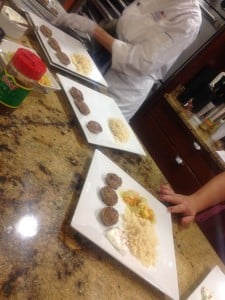 The Class: This was a Participation class based on traditional Turkish cuisine with 5 dishes:
The Class: This was a Participation class based on traditional Turkish cuisine with 5 dishes:
- Shepherd’s Salad
- Classic Lamb Kofte
- Plain & Perfect Pilav (Rice)
- Turkish Braised Leeks in Olive Oil & Lemon Juice
- Pears Poached in Clove Syrup
We first made the Salad together and then there was explanations of preparation and history of each dish afterwards with well written recipes and then each student prepared one of the dishes. I’ve been to many recreational cooking classes and what I liked most about this one was the instructors’s interesting personal history and story about her mother who was a child in war-torn France during WW II – and because she was of Italian descent, she was not treated very well by her French neighbors!
The Dishes:
The first dish we made at the beginning was the Shepherd’s Salad – very much a traditional Mediterranean style salad with cucumbers, red onion, parsley and tomatoes. This is the first time I had heard of Maras or kirimizi flakes which are a type of dried hot pepper seasoning. The dressing was essentially just lemon and olive oil, so it’s a very refreshing dish – which is especially cooling in hotter climate weather.
Kofte is a take on the “meatball”, the ultimate comfort food for pretty much every European or Middle Eastern cuisine! The meat used is lamb which strongly suggests Turkey’s Middle-Eastern routes, but also it’s Greek influence. Day-old bread which is dried out is soaked in water, squeezed out and then crumbled into a mixture of ground lamb, grated onion, a little egg, minced parsley, cumin salt and Kirmizi spice. The latter 2 spices suggest Middle Eastern cooking, especially the cumin. The secret of this dish is to roll the ball of meat in your hands and slightly compress into an egg shape – then cook the whole mixture in ghee (clarified butter) or just melted unsalted butter – only about 3 minutes per side, these cook pretty fast! The moistened/squeezed bread added to the meat I’ve seen in many Italian recipes for meatballs, but Italians generally use a mix of meats other than lamb like beef/pork/veal, so there’s another regional difference. One of the best explanations I’ve ever heard for why different cultures use different animal meats is that the terrain and vegetation of a place determines the animal (and in the case of pork, often the religious views as well!) – hilly/rocky regions have a better time raising goats, lamb and sheep, more open areas with more open grass sources tend towards beef and veal. The sauce for this is normally some yogurt mixed with some spices – meaty/warm vs. cooling/creamy is such a great contrast, this was my favorite dish of the evening – and so simple!
Plain & Perfect Pilav (Rice)
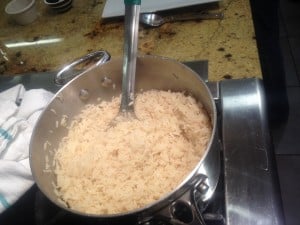 Don’t make fun of me – I have a really hard time making rice that doesn’t stick together! Yes, I soak the rice 3 or 4 times, but I guess I overcook it or maybe..I don’t fluff it at the right time! I’m not sure, but this recipe for rice came out perfect. Something unusual was that after rinsing, the rice was put into almost boiling water to pre-cook it and after that cooled down, it was drained and sauteed in butter for a few minutes. Also, the rice was cooked afterward for about 12 minutes at a low simmer with the top tightly on – I’m going to play with each part of this until I get my rice right..practice, practice, practice!
Don’t make fun of me – I have a really hard time making rice that doesn’t stick together! Yes, I soak the rice 3 or 4 times, but I guess I overcook it or maybe..I don’t fluff it at the right time! I’m not sure, but this recipe for rice came out perfect. Something unusual was that after rinsing, the rice was put into almost boiling water to pre-cook it and after that cooled down, it was drained and sauteed in butter for a few minutes. Also, the rice was cooked afterward for about 12 minutes at a low simmer with the top tightly on – I’m going to play with each part of this until I get my rice right..practice, practice, practice!
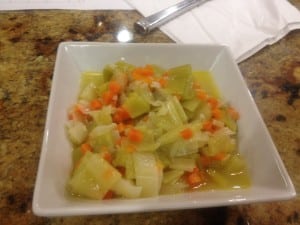 Turkish Braised Leeks in Olive Oil & Lemon Juice
Turkish Braised Leeks in Olive Oil & Lemon Juice
Leeks can be a real pain to prepare – they get so much dirt and sand between their leaves and it’s hard to get out. Chef Stefanie showed us a few tricks: after cutting off the root end, she cut cross-wise into about 1-inch disks and then we “telescoped” them by pushing out the centers into cold water and thus rinsing the dirt in cold water. Also the rings keep the integrity of the dish under the slow braising so they aren’t stringy messes. Add some chopped carrots and a tablespoon of uncooked rice into a heavy pan, and simmer in olive oil for about 10 minutes. Add salt, a little sugar and a little over a cup of water and let simmer on medium for about 20 or 30 minutes until soft. Finish with some lemon juice and maybe a sprinkle of salt and a very simple dish is complete.
This is a dish very similar to a Spanish dish where pears are poached in red wine and sugar – so I guess all through the Mediterranean something like this is prepared. It’s very simple: take pears that are rather firm (these were actually a bit ripe, but the dish worked anyway – it’s pretty forgiving), cut them in half and core and stem a bit and put them into a hot solution of a 2:1 ratio of water to sugar with some sliced lemon and a few cloves, and basically cook until the pears are soft, take out the pears and reduce until it becomes a syrup. I was thinking a little rosewater could have been used instead of the cloves, or maybe cinnamon. Chef Stephanie had some home-made pear sorbet she had made and paired the 2 together – a pear and pear comparison dessert – delicious! Ohh, and we took some of the Greek yogurt and put this on the reduced pairs instead of the Kofte – yogurt has that wonderful cooling/creamy influence and of course tastes great against sweet.
Culinaria is run by cooking class veterans and has a really choice cooking school set-up with room to grow. They also have an extensive offering of a broad range of cooking classes based on skill or special interest. In my opinion, they have a very good niche in the NoVA/DC area in that they are very close to Tysons Corner and tons of corporate event planners, but also they are centered in a relatively high-income demographic area (especially if Oakton nearby is considered). Once they get their wine programs going again – a short-term hiccup at best from what I understand – they will really have the interests of NoVA food enthusiasts and their dollars as well. I definitely intend on attending more of their classes and weekend events are probably where a DC guy like me is more likely to spend the most time – I hate driving to VA at rush hour during the week!
Charlie “I Drink on the Job” Adler
Some Upcoming Culinaria Cooking Classes on the TasteDC Calendar:
- Latin Caribbean Classics: Jerk Chicken, Saturday, October 12th, 2013
- Basic Techniques: Pork, Thursday, October 24th, 2013
- Advanced Pasta Making Techniques, Friday, November 8th, 2013
